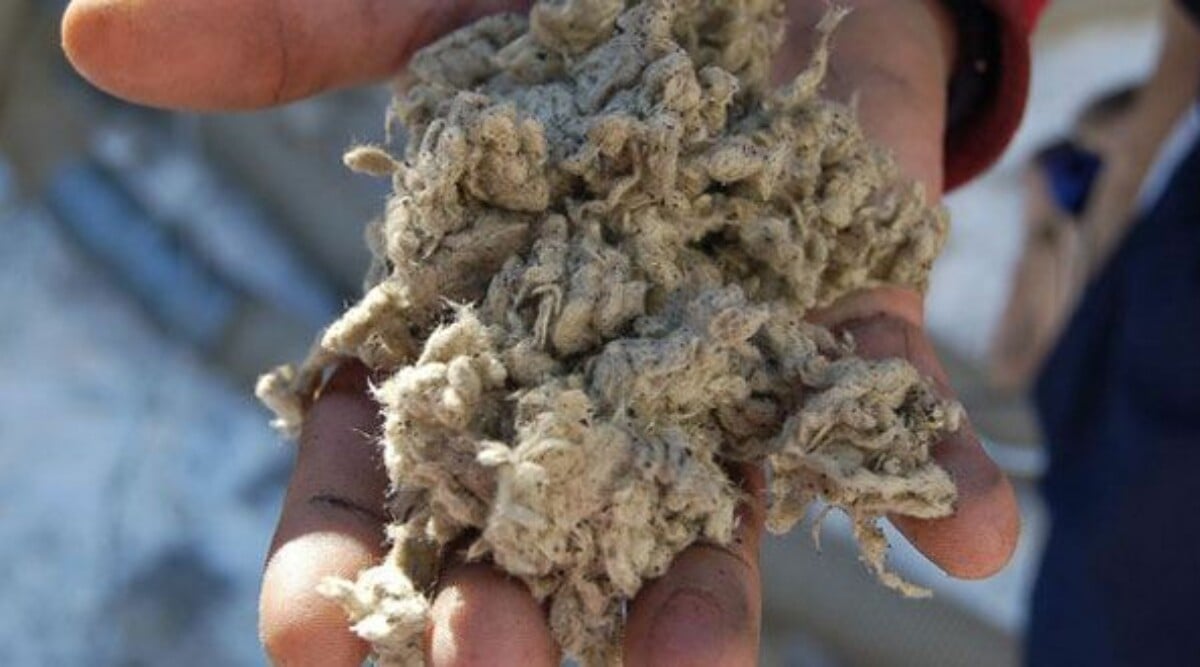Is Rockwool Harmful? Yes, But…

Rockwool has long been a popular media for growing hydroponic fruits, vegetables and herbs. However, I’m going to make the case against rockwool and argue why you should never use rockwool again because rockwool is harmful.

This post has gotten a lot of attention recently, and as a result is in the process of being updated to include more information. I cite studies and in no way reference any particular company – I am talking about mineral wool as a growing media in this post.
If you want better alternatives to rockwool, please check out my hydroponic media guide.
It’s Not Environmentally Friendly
I believe in environmental sustainability – it’s one of the reasons I’ve chosen to grow hydroponically. Rockwool doesn’t score well on the environmental scale. It’s not a natural material. Manufacturers use combine chalk and rock and then heat them up to around 3,000 degrees Fahrenheit. Next a stream of air is blown through it, resulting in extremely thin fibers of the rocky material. As the strings are blown out, they bunch together and form the material that you see for sale at the local hydroponics store.
Basically, they are taking two materials that are 100% natural (chalk and rock) and turning them into a hybrid material that will remain in that form forever. When you throw away your old rockwool it’s going to sit in a landfill looking just like that for a long, LONG time. If you absolutely insist on using it, try to save your rockwool in between your growing season and reuse it.
It’s Not Healthy To Be Around
Not only is rockwool unfriendly to the environment – it’s also potentially harmful to your health. New blocks can contain a lot of dust and loose fibers that can get in your eyes, mouth, skin and lungs. It’s similar to asbestos in the sense that the little fibers can lodge themselves in your lungs if you’re working with it a lot. It may not be as toxic as asbestos, but why take the risk? Not something that I’m willing to gamble with if I don’t have to – there are plenty of other hydroponic media choices! If you’re using rockwool, you should be using a mask, goggles and gloves when you work with it to protect yourself.
Here is what a 2002 study on man-made mineral fibres found:
The International Agency for Research on Cancer (IARC) has reviewed the carcinogenicity of man-made mineral fibres in October 2002. The IARC Monograph’s working group concluded only the more biopersistent materials remain classified by IARC as “possibly carcinogenic to humans” (Group 2B). These include refractory ceramic fibres, which are used industrially as insulation in high-temperature environments such as blast furnaces, and certain special-purpose glass wools not used as insulating materials.
The important part:
In contrast, the more commonly used vitreous fibre wools, including insulation glass wool, stone wool and slag wool, are considered “not classifiable as to carcinogenicity in humans” (Group 3). – Wikipedia article on mineral wool safety
A note on the IARC study:
Some manufacturers of insulation products have cited this volume while making erroneous claims that “IARC scientists confirm safety of mineral wool insulation”. These claims are just false. The findings in this volume are not a determination of non-carcinogenicity or overall safety.
What this means is that the study was not able to determine if it these mineral wools caused cancer or not. Again, my original point: why bother with it when there are better options?
If you’d like to read the original study, click here.
More Resources on Mineral Wool Safety
It Has a Naturally High pH
If you use rockwool right out of the package, you will likely have a problem once you plant seeds or seedlings in the material. It’s pH is much higher than other media, so it requires treating before it can be safely used with plants. Not only is this annoying and a hassle to deal with, it just slows down your entire process and puts a barrier in front of your growing efforts. Even when you get the pH correct, it can fluctuate much more than other types of growing media. You’ll have to watch the pH levels of your rockwool like a hawk to make sure there’s no nutrient blockage to your roots. The last thing you want is for your media to actually slow down the growth of your plant instead of speed it up.
If you’ve been convinced to try something else out, you might be wondering what options are out there. I’ve put together a hydroponic growing media guide that breaks down the advantages and disadvantages of some of the most popular growing media, but if you need some quick guidelines, here they are:
- Ability to reuse the material helps the environment, and saves you money
- No potentially negative health effects
- Easy to use, little maintenance required
What do you think? Do you use rockwool?
Header image courtesy of ilovebutter







